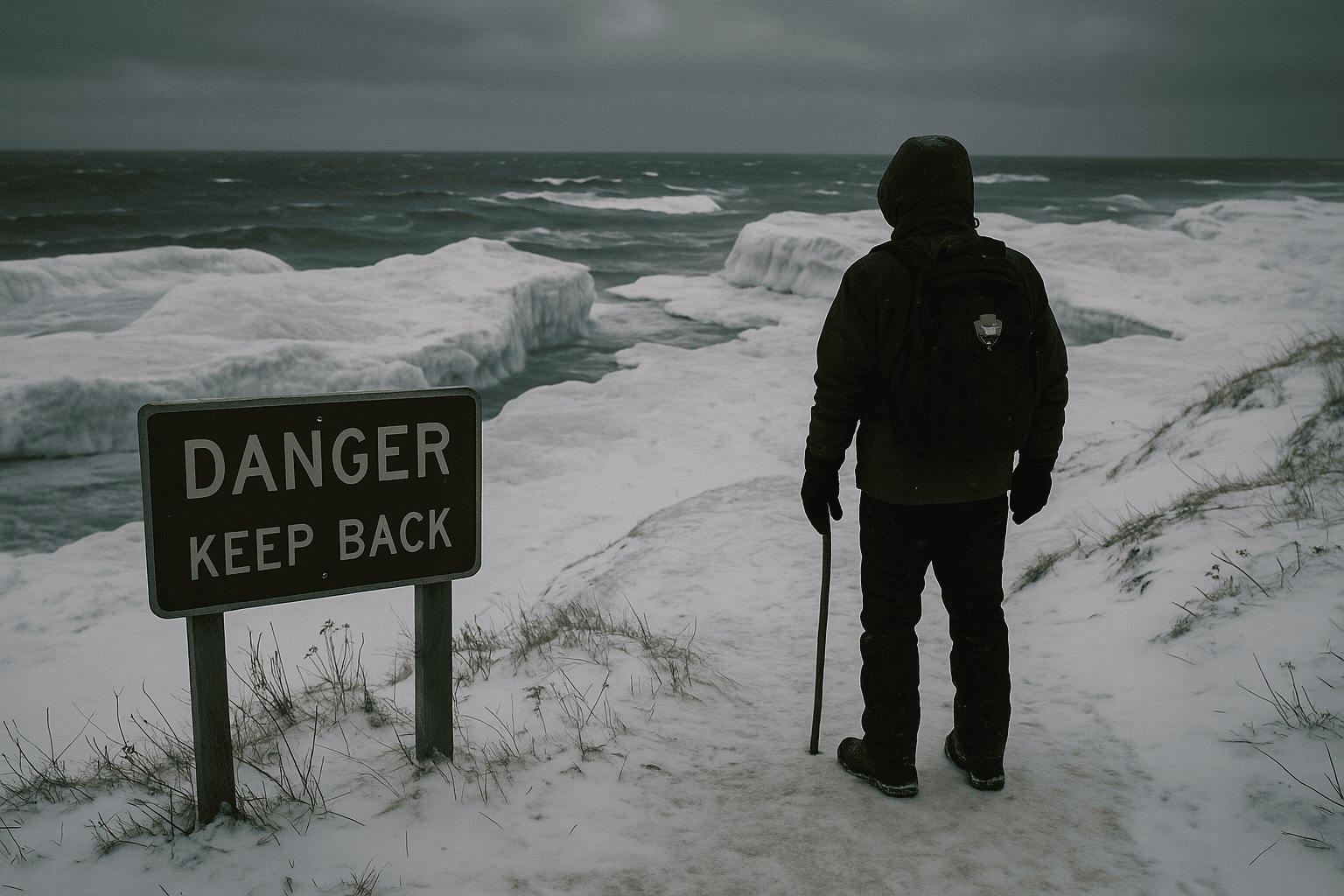Winter Safety Concerns Rise at Sleeping Bear Dunes, Community Impact
The National Park Service updated its Sleeping Bear Dunes landing page on November 18, 2025 with up to date alerts, maps, and seasonal access guidance, including cautions about shelf ice and winter trail conditions. For Grand Traverse County residents and visitors this guidance matters because the park draws local traffic and winter hazards can strain emergency services, affect vulnerable populations, and require coordinated public health responses.

The National Park Service maintains public pages for Sleeping Bear Dunes National Lakeshore that outline miles of sand beach, towering bluffs of about 450 feet above Lake Michigan, inland lakes, and recreational trails that include ski and snowshoe routes for winter use. The landing page was updated on November 18, 2025 to provide alerts, maps, seasonal access information, fee and pass details, and explicit safety guidance, including cautions about shelf ice during cold weather.
The timely online updates are the most immediate piece of news for residents of Grand Traverse County who plan visits or who live in coastal villages served by the park. Winter conditions on the lakeshore can produce sudden hazards. Shelf ice and icy bluff edges create risks for falls, hypothermia, and water related injuries that often require search and rescue or emergency medical attention. Those incidents have implications for local hospitals and EMS services that already face resource constraints in the winter months.
Beyond individual injuries, public health officials must consider the broader impact on community safety and equity. Seniors, people without reliable transportation, and lower income residents who rely on volunteer rescue resources may face disproportionate risks. Language access and outreach are also key, since safety information posted online may not reach people who lack internet access or who prefer information in languages other than English. Coordination between the National Park Service, Grand Traverse County emergency responders, and local health departments can help reduce preventable harm and ensure resources are distributed equitably.

Practical steps emphasized by the park include checking the official site for current alerts and maps before travel, understanding seasonal access rules, and following guidance for winter activities. From a policy perspective the situation highlights the need for sustained investment in signage, community education, and search and rescue capacity, as well as partnerships that improve information access for vulnerable populations. With winter conditions underway, local leaders and residents have a shared interest in planning and prevention to protect visitors and the community.


